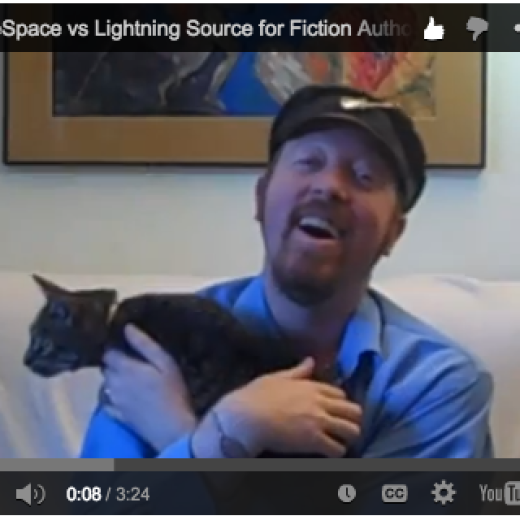Craft a First Chapter That Will Make Them Read More by Laurel Osterkamp
 Let’s welcome back Laurel Osterkamp as she shares with us “Craft a First Chapter That Will Make Them Read More.” Enjoy!
Let’s welcome back Laurel Osterkamp as she shares with us “Craft a First Chapter That Will Make Them Read More.” Enjoy!
***
A novel’s first chapter sets the tone, introduces the characters and storyline, and captivates the audience.
It is the first impression that can make or break a book.
Your first chapter should leave readers wanting more and eagerly turning the pages. So let’s explore the key elements of a compelling first chapter that will leave everyone hooked.
1. Start with a gripping opening line
This is easier said than done. For all of my novels, I revised my first line multiple times; there’s just so much pressure to create something powerful.
But the best first lines hint at a vulnerable protagonist while establishing a sense of mystery.
And sometimes, less is more.
Like in Albert Camus’s The Stranger: “Mother died today. Or maybe yesterday. I can’t be sure.”
2. Introduce the protagonist and their goal
The first chapter must answer two essential questions: Who is the story about, and what does that person want?
Your protagonist’s goal drives the plot forward and it could be anything from finding true love to seeking revenge.
What matters is making that goal clear from the first page. For example, in J.K. Rowling’s Harry Potter and the Philosopher’s Stone we are introduced to Harry, a young boy who lives with his cruel relatives and is constantly reminded of his parent’s death.
His goal is to escape his miserable life and find out more about his mysterious past.
3. Create a sense of urgency and conflict
Conflict is the driving force of any story.
There’s external conflict, like a battle or a feud, or internal conflict, where the protagonist’s struggles come from within.
In Suzanne Collins’s The Hunger Games, the first chapter introduces us to a world where children are forced to participate in a deadly game for entertainment.
This external conflict creates a sense of urgency and conflict, and readers wonder if Katniss (the protagonist) will survive. But her internal conflict is also apparent.
Readers wonder if she’ll run away and abandon her family, or stay and fulfill her sense of duty.
4. Use sensory details to set the scene
Readers want to be transported to the world of the story, and sensory details play a crucial role in achieving that.
Use descriptive language to paint a vivid picture and use all five senses — sight, sound, smell, touch, and taste — to bring the scene to life.
In the first chapter of To Kill a Mockingbird by Harper Lee, we are introduced to the town of Maycomb through the eyes of the protagonist, Scout.
Lee uses sensory details to describe the town, making the readers feel like they are walking the streets alongside Scout.
5. Introduce secondary characters
Secondary characters play a vital role in supporting and shaping the narrative.
In the first chapter, these characters give readers a sense of the protagonist’s world.
However, be careful not to overwhelm characters with too many characters.
Make sure the ones you do introduce have a distinct personality and role in the story.
Like in the first chapter of Pride and Prejudice, Jane Austen introduces Mr. and Mrs. Bennet, the parents of the protagonist, Elizabeth. ‘
Their contrasting personalities set the stage for the events that unfold.
6. Use dialogue to reveal character traits
Dialogue is a powerful way to reveal a character’s personality and motivations.
It should sound natural and flow seamlessly. I know that’s not always easy to do, but as an example, check out the first chapter of The Fault in Our Stars by John Green.
The protagonist, Hazel, meets Augustus for the first time, and their witty banter gives readers an insight into their personalities and their budding relationship.
For further help, please check out my column from last month, How To Master Banter for Dynamic Character Relationships.
7. End with a cliffhanger or a question
The last line of the first chapter is just as crucial as the first.
To make readers want to continue to chapter two, end chapter one on a cliffhanger or pose a question.
In The Girl on the Train by Paula Hawkins, the protagonist, Rachel, sees something shocking during her daily commute.
The chapter ends with her questioning what she just witnessed, leaving readers curious and wanting to know more.
8. Keep it concise and to the point
While it is important to include all the necessary elements in the first chapter, it is equally important to keep it concise and to the point.
Avoid lengthy descriptions and too much backstory, as it can slow down the story’s pace.
Stick to the main points and leave the details for later chapters.
9. Revise and edit multiple times
You will most likely need several rounds of revisions and edits to get your first chapter right.
Don’t be afraid to make changes and cut parts that don’t work. Show it to beta readers and gather feedback.
Remember, the first chapter is the first impression, so make it a good one.
By following these tips and examples, you can craft a first chapter that will leave a lasting impact and make readers eagerly anticipate the rest of your story.
Take your time, be creative, and make sure your first chapter introduces your fictional world and characters in a way that your book deserves.
***
About the Author
 Laurel Osterkamp is from Minneapolis, where she teaches and writes like it’s going out of style. Her short fiction has been featured in Abandon Journal, Idle Ink, Tangled Locks Literary Journal, Bright Flash Literary Journal, and The Metawoker, among other places. Her novel Favorite Daughters was released last year by Black Rose Writing, and her new novel, Beautiful Little Furies, will be released in December.
Laurel Osterkamp is from Minneapolis, where she teaches and writes like it’s going out of style. Her short fiction has been featured in Abandon Journal, Idle Ink, Tangled Locks Literary Journal, Bright Flash Literary Journal, and The Metawoker, among other places. Her novel Favorite Daughters was released last year by Black Rose Writing, and her new novel, Beautiful Little Furies, will be released in December.
Social Media:
Website – https://laurellit.com
Facebook – https://www.facebook.com/authorlaurelosterkamp
BookBub – https://www.bookbub.com/profile/laurel-osterkamp
Instagram: Laurel Osterkamp (@laurel_osterkamp) • Instagram photos and videos






